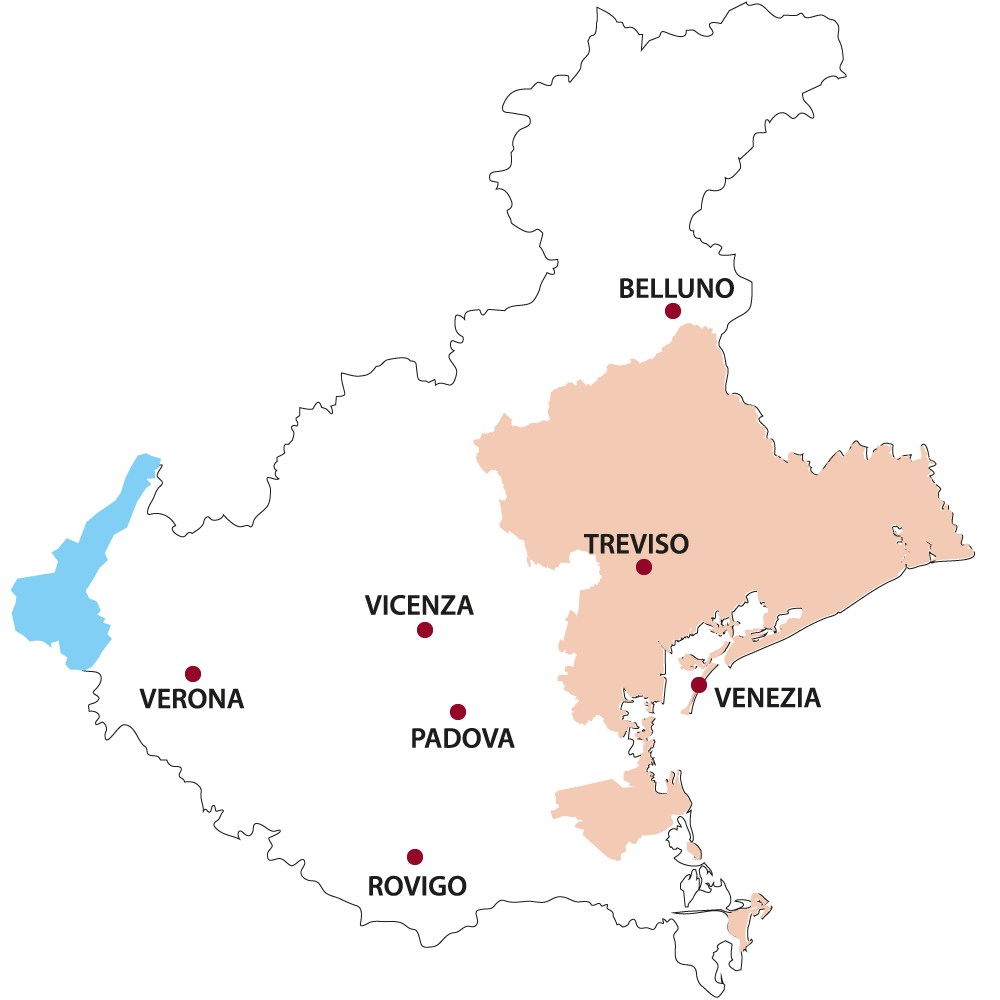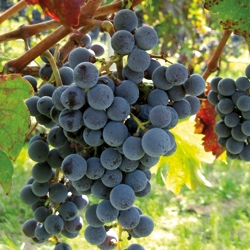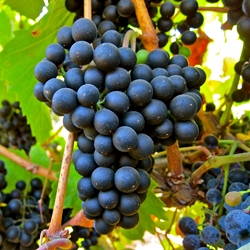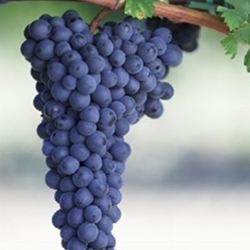

Zona di produzione
The territory in which the consortium, Consorzio Vini Venezia, is operational includes a vast area hosting the vineyards regulated by the designation of origin rules applying to local areas of production (denominazione di Origine Controllata e Garantita Lison e Malanotte del Piave and Denominazione di Origine Controllata Venezia, Lison-Pramaggiore e Piave). The area in question lies within the boundaries of three provinces (Treviso, Venezia and, in small part, Pordenone). For hundreds of years, this flat land has been given over to vine-growing. The area stretches from the foot of the Dolomite mountains toward the mouth of the Piave river, while spreading out, eastward toward the province of Venezia and the natural boundary formed by the river Tagliamento, and also into Venice’s hinterland and lagoon, and the Adriatic itself.
ZONE OF PRODUCTION LISON DOCG Elegant and refined, with delicate hints of flowers and bitter almond, Lison is the jewel in the crown of the winemaking production in the DOC Lison-Pramaggiore district. Once known in Italy and abroad as Tocai, Lison takes its name from the heart of its production area, encompassed between Pramaggiore, Lison, San Stino di Livenza and Portogruaro, where Tocai vines have been cultivated for the last two centuries at least. For many centuries, under the name of Tocai, this wine has made the art of winegrowers from the Venetian mainland famous in the world. Afterwards, from 1st of April 2007 the European Community prohibited the use of this denomination, by approving the request advanced by the Hungarians and putting an end to the long dispute started in the Fifties. After different proceedings and appeals, Malanotte del Piave DOCG is the maximum expression of Raboso Piave and the land lapped by the Piave river. The name Malanotte evokes the little medieval town located in Tezze di Piave (Vazzola) in the province of Treviso purchased in the 17th century by the aristocratic family of ‘Malanotte’ from Trentino. Thanks to the Malanotte family the wine cultivation and production of this region flourished again. The little town of Malanotte preserves and enshrines the history of these lands. Here, the vineyards, in the shadow of the mulberry trees and being lulled by the slow flow of the Piave river, have been providing since ancient times a red wine revealing all the scent and flavours of its territory and history. Raboso del Piave has always been considered as “The Wine” of this area: it is a great quality wine, but not so easy to preserve and manage in wine cellars because of its marked acidity. Nevertheless, winemakers from the Piave Italy was compelled to apply the Regulation (EC) No 382/2007 repealing the derogations that allowed the use of the Tocai denomination. The wine of the Serenissima from that moment on acquired a new denomination, Lison, but the grape variety keeps on maintaining still nowadays the well-beloved name. In fact, Lison is obtained 100% from grapes of the ancient French Sauvignonasse, which was never enhanced in its country of origin, but had great success in Veneto and Friuli, where it has been grown for centuries under the name Tocai Friulano. The wine achieved from this grape variety, as a result of the passion and hard work of winegrowers and oenologists, matches perfectly with fish dishes, soups, fresh cheeses or risotto, but it is perfect and refreshing as an aperitif as well, drunk on its own. In 2010 the Consortium for the Protection of DOC Lison - Pramaggiore Wines finally managed to achieve the most noble of aims: obtain the prestigious acknowledgement of the DOCG, Denomination of Controlled and Guaranteed Origin for the Lison wine, a symbol of a land able to preserve its ancient tastes. The technical enhancement of this flagship of local viticulture has required many years of commitment and toil. A strict cultivation and vinification protocol has been drawn up. The Consorzio di tutela (syndicate) and local research institutes have selected an exclusive strain of yeasts from this species of vine. In any case, thanks to our awareness of the qualities of the product – and our confidence in its unique, inimitable characteristics – as from the harvest of 2010, Lison will be authorised to use this highly prestigious tape.
ZONE OF PRODUCTION MALANOTTE DI PIAVE D.O.C.G. Malanotte del Piave DOCG is the maximum expression of Raboso Piave and the land lapped by the Piave river. The name Malanotte evokes the little medieval town located in Tezze di Piave (Vazzola) in the province of Treviso purchased in the 17th century by the aristocratic family of ‘Malanotte’ from Trentino. Thanks to the Malanotte family the wine cultivation and production of this region flourished again. The little town of Malanotte preserves and enshrines the history of these lands. Here, the vineyards, in the shadow of the mulberry trees and being lulled by the slow flow of the Piave river, have been providing since ancient times a red wine revealing all the scent and flavours of its territory and history. Raboso del Piave has always been considered as “The Wine” of this area: it is a great quality wine, but not so easy to preserve and manage in wine cellars because of its marked acidity. Nevertheless, winemakers from the Piave area never abandoned their “first-born” wine and awaited with patience the right time to smooth out the rough edges of its personality. At the end of the last century they reintroduced the method of drying the grapes (raisining) in the production of Raboso del Piave, enhancing an ancient technique to produce a modern wine, the current Malanotte del Piave. This austere, sapid and very characteristic wine exhibits a bouquet of spicy Marasca cherry, blackberry and bilberry, and gets ready to become part of the shortlist of top Italian wines. In order to grow the grapes of Raboso Piave, in the late 19th century the brothers Bellussi, winegrowers in Tezze di Piave, invented the system known since then as bellussera. Such system, which consisted of placing some vines round a central support, often a mulberry, and connecting them to it in a way which reminds of wheel spokes, was typical of the Treviso plain for a long time.
ZONE OF PRODUCTION LISON PRAMAGGIORE D.O.C. The DOC Lison-Pramaggiore area extends between the provinces of Pordenone, Treviso and Venice and is bordered to the east by the Tagliamento river and to the west by the Livenza river. The denomination gets its name from the villages of Lison, in the municipality of Portogruaro, and Pramaggiore, which are located in the middle of the whole wine production area. In its soils it is possible to detect, at shallow depth, the formation of different layers of carbonate aggregates; the typical local saying “soils rich in caranto” comes from here. What it has been known since a long time, and namely that the soils rich in calcium produce prestigious and aromatic wines, is here reconfirmed. The soil and climate conditions of the area lead to the production of wines of great aromatic character, such as Pinot and Sauvignon, with velvety and persistent body, on the one hand; and wines with scents of fruits, jam and vegetables such as Refosco dal Peduncolo Rosso, Merlot and Cabernet, on the other. Moreover, thanks to low use of pesticides and well developed technologies, the organoleptic properties of the Lison- Pramaggiore wines remain unchanged.
ZONE OF PRODUCTION PIAVE D.O.C The Piave district begins where the river Piave leaves the Dolomites behind to cross the broad plains of Treviso and Venice. The territory denominated Doc Piave is vast. It stretches from the north-eastern boundary between the province of Treviso and the Friuli region to the mouth of the Piave, at Cortellazzo, and from the low hills of Conegliano and Montello to Venice’s immediate hinterland. Vineyards dominate a landscape of mineral-rich, well balanced, warm soils. These decidedly smooth red DOC Piave wines present marked structure and balance among the various components. The ruby red colouring, of varying intensity, features violaceous glints, occasionally garnet-coloured on ageing. The aroma is fragrant and intense and, depending on the variety of vine, aromas of red berries, cherry, ripe fruit, and hints of spice, herbaceous, or hay, tobacco or roast may be noted. The aromatic white wines are characterised by flowery fragrances and fragrances of fruit and bread crust. The young white wines, from the alluvial zones, are fresh in character, and are therefore popular among younger consumers.
ZONE OF PRODUCTION VENEZIA D.O.C. The DOC Venezia area includes the entire DOC Piave territory and nearly the entire DOC Lison- Pramaggiore area. It therefore takes in the provinces of Treviso and Venezia, stretching from the Conegliano hills to the Caorle lagoon. The soils of the eastern plains of the Veneto region are derived from alluvium mainly originating at the time of the melting of the Alpine and pre- Alpine glaciers, followed by the action of the Piave river, and to a lesser extent, the action of the Livenza river. Historical factors and the climate have both contributed to the environmentally and culturally homogeneous nature of today’s provinces of Treviso and Venezia. Indeed, nowadays the vine-growing and wine producing practices of the two areas are practically identical, thus complicating the task of clearly establishing boundaries in this regard. Institution of the Doc Venezia denomination meant the best wines of the Marca trevigiana (the lands of the area of Treviso) and of the lands of Venice could be presented as a single designation capable of presenting itself to the various markets (especially foreign marketplaces) not only with suf ficient determination, energy and dynamism but also with sufficient quantities of product. Most importantly, local production has been romoted. The red Doc Venezia wines are characterised by marked depth of colouring ranging from ruby red to garnet, on ageing. The aromas of confectionery and wildberries, or spicy tobacco, or herbaceous, notes will be more or less marked, depending on the area of origin. Overall, the taste is always full, adequately tannic and with excellent acid balance. The taste includes notes of red berries sustained by fine structure and sapid consistency. The young white wines are generally of a yellow straw colour with greenish hints of varying intensity. These wines release flowery primary notes, of acacia, wildflowers and camomile, tending to fruity, as well as hints of apple, pear and apricot. The marked sapidity presents gustative tenacity.
Caratteristiche e tipologie vino
A CONSORTIUM FOR THE PROTECTION OF EQUALITY The Consorzio Vini Venezia (Venice Wines Consortium) was established in 2011 by the wine producers of the Consorzio Volontario Tutela Vini DOC Lison Pramaggiore (Voluntary Consortium for the Protection of DOC Lison Pramaggiore Wines) and the Consorzio Tutela Vini del Piave DOC (Voluntary Consortium for the Protection of DOC Piave Wines) with the purpose, through their combined energies, to offer higher protection and a better promotion to their wine production, by optimising resources and creating a more structured organization in order to comply with the new requirements introduced by wine regulations in force. The quality wines produced in these vineyard terrains need a continuous technical/ scientific support as well as promotional backing and it was this spirit that inspired winemakers to join forces and create a single large wine consortium. Another important activity consists in checking that associates place their wines on the market in full respect of national and Community regulations, through a supervisory action that prevents misuses and frauds in the use of DOC and DOCG denominations. In this way the protection of consumers’ rights and interests is guaranteed as well. Furthermore the Consortium offers its associates a qualified service of technical assistance in viticulture, oenology and last but not least, provides each wine producer, through research and testing, with the right information to enhance products of his vineyards. The zoning of both DOC Lison- Pramaggiore and DOC Piave areas was carried out with this specific aim and has allowed to obtain a complete survey of the environment, soil characteristics and cultivation techniques thanks to which it has been possible to plan the viticulture and oenology of the territory effectively. Besides, the Consortium focuses much attention on the guided and integrated battle against the use of pesticides in viticulture, encouraging the ripening of grapes with as few pesticide treatments as possible. With regard to this delicate aspect affecting the healthiness of the final product and the protection of the environment, the Consortium can proudly state that its associates have demonstrated particular sensitivity on this issue, by scrupulously following the advice provided by the Consortium technicians: there is in fact a high concentration of production of organic wine in this area. Finally, we must not forget the new role played by the Consortium, pursuant to the approval of the recent Legislative Decree 61/2010 and subsequent Decrees that recognises the Consortium as an inter-professional organization. Therefore, in addition to its usual activities of protection, promotion, improvement and supervision, the Consortium now has the chance and all the necessary requirements for regulating the offer of wines.
Grapes
-

MERLOT
-

CABERNET
-

REFOSCO DAL PEDUNCOLO ROSSO
White Wines
LISON E LISON CLASSICO D.O.C.G.
Colour: giallo paglierino più o meno carico con riflessi verdognoli e talvolta dorati;
Bouquet: caratteristico, gradevole;
Taste: asciutto, vellutato, con eventuale percezione gradevole di legno;
Alcoholic Strength minimum total volume: 12% vol, nella specificazione «Classico» 12,5% vol.;
Serving Temperature: 10°-12°.
Accompaniments: piatti d’apertura, antipasti, formaggi teneri; è molto usato come aperitivo e per accompagnare minestre e tuttopasto;
LISON-PRAMAGGIORE BIANCO
Colour: giallo paglierino più o meno carico con riflessi verdognoli e talvolta dorati;
Bouquet: fine, gradevole;
Taste: asciutto, vellutato, con eventuale percezione gradevole di legno;
Alcoholic Strength minimum total volume: 12% vol.;
Serving Temperature: 10°-12°.
Accompaniments: antipasti ai frutti di mare, risotto ai frutti di mare, insalata con gamberi;
LISON-PRAMAGGIORE CHARDONNAY
Colour: more or less intense straw-like yellow
Bouquet: fino, caratteristico ed elegante;
Taste: asciutto, talvolta morbido, fine ed invitante con eventuale percezione gradevole di legno;
Alcoholic Strength minimum total volume: 12% vol.;
Serving Temperature: 10°.
Accompaniments: viene usato come aperitivo, per antipasti e primi di pesce. Si presta alla Spumantizzazione;
LISON-PRAMAGGIORE SAUVIGNON
Colour: giallo paglierino,talvolta dorato;
Bouquet: gradevolmente tipicamente aromatico;
Taste: asciutto e vellutato con eventuale percezione gradevole di legno;
Alcoholic Strength minimum total volume: 12% vol.;
Serving Temperature: 8°-10°.
Accompaniments: ottimo come aperitivo, con il prosciutto crudo e i primi piatti alle erbe;
LISON-PRAMAGGIORE VERDUZZO
Colour: giallo paglierino e giallo dorato;
Bouquet: delicato, talvolta con sentore floreale;
Taste: asciutto e caratteristico;
Alcoholic Strength minimum total volume: 11,50%
Serving Temperature: 8°-10°.
Accompaniments: salumi, risotti a base di erbe, pesce bollito, frittate;
LISON-PRAMAGGIORE VERDUZZO PASSITO
Colour: giallo dorato più o meno intenso, talvolta ambrato Profumo: delicato, fine, gradevole;
Taste: dolce, caldo, armonico con eventuale percezione gradevole di legno;
Alcoholic Strength minimum total volume: 15% vol.;
Serving Temperature: 8°-10°.
Accompaniments: dessert, ad esempio i pasticcini e i biscotti, i dolci senza crema come il panettone. Ottimo con i formaggi erborinati;
LISON-PRAMAGGIORE SPUMANTE
Colour: more or less intense straw-like yellow
Bouquet: caratteristico, fruttato;
Taste: sapido, gradevolmente aromatico;
Alcoholic Strength minimum total volume: 11,00%
Serving Temperature: 8°-10°.
Accompaniments: dessert, antipasti;
Foam: refined and persistent/lingering
Red Wines
LISON-PRAMAGGIORE ROSSO
Colour: rosso rubino anche intenso se giovane, tendente al granato se invecchiato Profumo: vinoso intenso e gradevole;
Taste: asciutto, armonico, con eventuale percezione gradevole di legno;
Alcoholic Strength minimum total volume: 12% vol. per la qualificazione Riserva: 12,5% vol.;
Serving Temperature: 18°-20°.
Accompaniments: carni grasse, selvaggina, umidi e arrosti;
LISON-PRAMAGGIORE MERLOT
Colour: rosso rubino se giovane, tendente al granato con invecchiamento;
Bouquet: vinous, intense, characteristic
Taste: asciutto, talvolta vellutato, giustamente tannico, aromatico, con eventuale percezione gradevole di legno;
Alcoholic Strength minimum total volume: 12% vol.; per la qualificazione Riserva: 12,5% vol.;
Serving Temperature: 18°-20°.
Accompaniments: salumi carni bianche e rosse, pollame, carni in umido, arrosti di carne bianca;
LISON-PRAMAGGIORE MALBECH
Colour: lively ruby red, tending to garnet when aged
Bouquet: vinous, characteristic, more intense if aged, herbaceous, with notes of green capsicum and berries;
Taste: asciutto, pieno, talvolta morbido con eventuale percezione gradevole di legno;
Alcoholic Strength minimum total volume: 12% vol.;
Serving Temperature: 18°.
Accompaniments: carni bianche, minestre in genere;
LISON-PRAMAGGIORE CABERNET
Colour: lively ruby red, tending to garnet when aged
Bouquet: vinous, characteristic, more intense if aged, herbaceous, with notes of green capsicum and berries;
Taste: dry, full, herbaceous, well-balanced, and with possible woody hint
Alcoholic Strength minimum total volume: 12% vol.;
Serving Temperature: 18°-20°.
Accompaniments: arrosti di carni bianche o rosse, pollame cacciagione e formaggi stagionati;
LISON-PRAMAGGIORE CARMENÈRE
Colour: intense ruby red, tending to garnet when aged;
Bouquet: vinoso, caratteristicamente erbaceo e persistente;
Taste: asciutto, pieno, erbaceo, austero se invecchiato;
Alcoholic Strength minimum total volume: 12% vol.; per la qualificazione Riserva: 12,5% vol.;
Serving Temperature: 18°-20°.
Accompaniments: arrosti di carne rossa e bianca e formaggi a media stagionatura;
LISON-PRAMAGGIORE REFOSCO DAL PEDUNCOLO ROSSO
Colour: rosso intenso con riflessi violacei, granati se invecchiato;
Bouquet: vinoso e caratteristico;
Taste: asciutto, pieno, con eventuale percezione gradevole di legno;
Alcoholic Strength minimum total volume: 12,5% vol, per la qualificazione Riserva: 13% vol.;
Serving Temperature: 18°-20°.
Accompaniments: carni grasse, selvaggina, umidi e arrosti.
LISON-PRAMAGGIORE REFOSCO DAL PEDUNCOLO ROSSO PASSITO
Colour: rosso rubino tendente al granato;
Bouquet: vinoso, gradevole e persistente;
Taste: amabile, armonico ed intenso;
Alcoholic Strength minimum total volume: 15% vol.;
Serving Temperature: 10°.
Accompaniments: dolci in genere, cioccolata;
Wines
PIAVE MALANOTTE D.O.C.G.
Colour: rosso rubino carico con riflessi violacei, tendente al granato con l’invecchiamento;
Bouquet: tipico, di marasca/ciliegia, speziato;
Taste: austero, sapido, giustamente tannico, leggermente acidulo;
Alcoholic Strength minimum total volume: 12,5% vol.;
Accompaniments: è un vino robusto, intenso e decisamente più “morbido” del Raboso Piave. Da gustare al meglio con arrosti di carni rosse, cacciagione da pelo e selvaggina nobile di piuma, nonché con formaggi stagionati. Invecchiamento obbligatorio: 36 mesi di cui almeno 12 in botte. Obbligo di utilizzo di percentuale variabile tra 15% e 30% di uve sottoposte ad appassimento in appositi fruttai.

